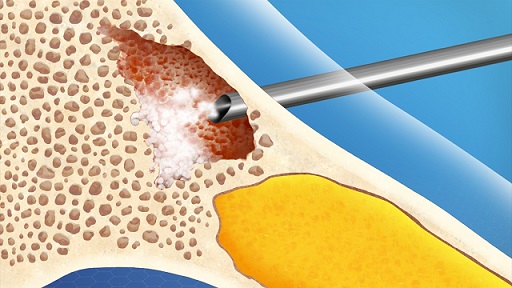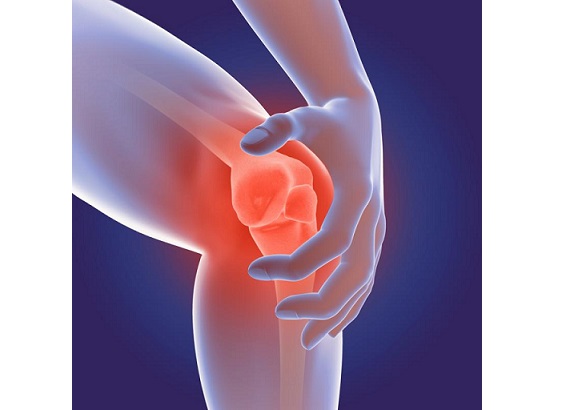Earnings delivered despite slower market procedure volume and supply recovery; Growth driven by TAVR, Pacing, U.S. Core Spine, and International Diabetes
DUBLIN, Nov. 22, 2022 /PRNewswire/ — Medtronic plc (NYSE:MDT) today announced financial results for its second quarter of fiscal year 2023, which ended October 28, 2022.
Key Highlights
- Revenue of $7.6 billion decreased 3% as reported and increased 2% organic
- GAAP diluted EPS of $0.32 decreased 67%; non-GAAP diluted EPS of $1.30 decreased 2%
- Company updates guidance; expects organic revenue to accelerate in second half
The company reported worldwide revenue of $7.585 billion, a decrease of 3% as reported and an increase of 2% on an organic basis. The organic comparison excludes a $457 million negative impact from foreign currency translation and a $25 million contribution from the company’s fiscal first quarter acquisition of Intersect ENT, which is reported in the Specialty Therapies division in the Neuroscience Portfolio. Unless otherwise stated, all revenue growth rates in this press release are on an organic basis, which excludes the impact of foreign currency translation and revenue from the Intersect ENT acquisition.
The company’s second quarter organic revenue results reflect slower supply recovery or lower than anticipated underlying market procedure volumes in certain businesses and the pricing impact of volume-based procurement in China. These challenges were partially offset by strength in certain product lines, including Transcatheter Aortic Valves (TAVR), Cardiac Pacing, Core Spine in the United States, and Diabetes in International.
As reported, second quarter GAAP net income and diluted earnings per share (EPS) were $427 million and $0.32, respectively, both decreases of 67%. As detailed in the financial schedules included at the end of this release, second quarter non-GAAP net income and non-GAAP diluted EPS were $1.725 billion and $1.30, respectively, decreases of 4% and 2%, respectively. Included in the company’s GAAP earnings is a $764 million income tax reserve adjustment that was a direct result of the previously disclosed U.S. Tax Court opinion issued in the fiscal second quarter. The company’s earnings decline also reflects the continued macroeconomic impact of inflation on materials, direct labor, freight, and utilities.
Second quarter U.S. revenue of $4.069 billion represented 54% of company revenue and increased 2% as reported and 1% organic. Non-U.S. developed market revenue of $2.157 billion represented 28% of company revenue and decreased 13% as reported and increased 3% organic. Emerging Markets revenue of $1.359 billion represented 18% of company revenue and decreased 1% as reported and increased 4% organic.
“Slower than predicted procedure and supply recovery drove revenue below our expectations this quarter. We continue to take decisive actions to improve the overall performance of the company, including streamlining our organizational structure, strengthening our supply chain, driving a performance culture, and strategically allocating capital to support our best growth opportunities with the investments they deserve,” said Geoff Martha, Medtronic chairman and chief executive officer. “We’re seeing the benefit of these changes – along with new incentives and strong execution – in certain businesses, and we’re focused on ensuring these efforts translate into improved performance across the company. Looking ahead, we’re confident we have a clear path to delivering durable growth and increased shareholder value.”
Cardiovascular Portfolio
The Cardiovascular Portfolio includes the Cardiac Rhythm & Heart Failure (CRHF), Structural Heart & Aortic (SHA), and Coronary & Peripheral Vascular (CPV) divisions. Cardiovascular revenue of $2.773 billion decreased 2% as reported and increased 4% organic, with all three divisions returning to growth this quarter, including a high-single digit increase in SHA and low-single digit increases in CRHF and CPV, all on an organic basis.
- Cardiac Rhythm & Heart Failure revenue of $1.431 billion decreased 3% as reported and increased 3% organic. Cardiac Rhythm Management revenue increased mid-single digits, with mid-single digit growth in Cardiac Pacing Therapies driven by high-teens growth in Leadless Pacemakers from continued global adoption of Micra™ transcatheter pacing systems. Cardiovascular Diagnostics revenue increased low-single digits, as procedures remain under pressure market-wide. Cardiac Ablation Solutions revenue increased low-single digits, including low-double digit growth in the United States on the continued adoption of its Arctic Front™ cryoablation catheters. The company completed its acquisition of Affera in the second quarter, expanding its cardiac ablation portfolio to include technology under development, including its first-ever cardiac mapping and navigation platform that encompasses a differentiated, fully integrated diagnostic, focal pulsed field, and radiofrequency ablation solution.
- Structural Heart & Aortic revenue of $757 million increased 1% as reported and 8% organic. Structural Heart increased low-double digits, including mid-teens growth in transcatheter aortic valves (TAVR). Aortic increased mid-single digits with high-single digit growth in thoracic stent graft systems. Cardiac Surgery increased mid-single digits, driven by growth in surgical valves and perfusion systems.
- Coronary & Peripheral Vascular revenue of $584 million decreased 4% as reported and increased 2% organic. Coronary & Renal Denervation increased low-single digits on U.S. share gains from the recent launch of the Onyx Frontier™ drug-eluting stent, despite overall market percutaneous coronary intervention (PCI) procedures remaining flat in developed markets. Earlier this month, the company submitted the final module of the Symplicity Spyral™ renal denervation system premarket approval package to the U.S. Food and Drug Administration. Peripheral Vascular Health increased low-single digits, with growth in vascular embolization, drug-coated balloons, and superficial venous, partially offset by declines in directional atherectomy, peripheral stents, and percutaneous transluminal angioplasty balloons.
Medical Surgical Portfolio
The Medical Surgical Portfolio includes the Surgical Innovations (SI) and the Respiratory, Gastrointestinal & Renal (RGR) divisions. Medical Surgical revenue of $2.070 billion decreased 10% as reported and 3% organic, with a low-double digit decline in RGR and partially offset by low-single digit growth in SI. Excluding the impact of ventilator sales given the increased COVID-19 related demand in the prior year, Medical Surgical revenue decreased 1% organic.
- Surgical Innovations revenue of $1.398 billion decreased 7% as reported and increased 1% organic. Advanced Surgical Instruments decreased low-single digits given expected acute supply chain shortages of raw materials and the impact of China provincial volume-based procurement (VBP) stapling tenders. These declines were partially offset by strength in Hernia & Wound Management, which increased mid-single digits. In Surgical Robotics, the company received three significant regulatory approvals for its Hugo™ robotic-assisted surgery system: Conformité Européenne (CE) Mark clearance for a general surgery indication, Health Canada license for a general laparoscopic surgery indication, and Ministry of Health, Labor, and Welfare (MHLW) approval for urological and gynecological indications in Japan.
- Respiratory, Gastrointestinal & Renal revenue of $671 million decreased 16% as reported and 11% organic. RGR revenue decreased 5% organic excluding the impact of ventilator sales. Respiratory Interventions decreased mid-twenties, with sales of ventilators declining low-fifties as demand continued to be well below pre-pandemic levels as expected. Patient Monitoring decreased mid-single digits, with expected low-double digit declines in Nellcor™ pulse oximetry products as COVID tailwinds abate, offset by low-double digit growth in Perioperative Complications products. The company announced last month its intention to separate the combined Respiratory Interventions and Patient Monitoring businesses. Gastrointestinal revenue decreased low-single digits given non-emergent procedure softness in the market, including low-double digit declines in Hepatopancreaticobiliary (HPB) products partially offset by low-single digit growth in Chronic and Colorectal products. Renal Care Solutions decreased low-double digits given product availability challenges. Medtronic announced in May its intention to contribute its Renal Care Solutions business into a new, independent kidney care-focused medical device company together with DaVita.
Neuroscience Portfolio
The Neuroscience Portfolio includes the Cranial & Spinal Technologies (CST), Specialty Therapies, and Neuromodulation divisions. Neuroscience revenue of $2.186 billion increased 2% as reported and 5% organic, with a high-single digit increase in Specialty Therapies, a mid-single digit increase in CST, and a flat result year-over-year in Neuromodulation, all on an organic basis.
- Cranial & Spinal Technologies revenue of $1.081 billion increased 1% as reported and 5% organic. Spine & Biologics increased mid-single digits, with mid-teens growth in the United States partially offset by the impact of the China national volume-based procurement (VBP) spine tender. Neurosurgery increased high-single digits, with double digit growth in robotics, navigation, and powered surgical instruments.
- Specialty Therapies revenue of $686 million increased 8% as reported and 9% organic. Neurovascular increased high-single digits, with double digit growth in mechanical thrombectomy, aspiration, flow diversion, and liquid embolic products. Pelvic Health increased low-single digits on continued profitable growth despite competitive pressure. ENT increased high-teens on an organic basis driven by strength in Straightshot™ microdebriders, NIM Vital™ nerve monitoring systems, and StealthStation™ ENT navigation systems.
- Neuromodulation revenue of $419 million decreased 4% as reported and was flat year-over-year organic. Pain Therapies increased mid-single digits, with high-single digit growth in Targeted Drug Delivery and mid-single digit growth in Pain Stim. Interventional decreased mid-single digits on product availability challenges and competitive pressure. Brain Modulation decreased low-single digits, as significant declines of replacement devices were partially offset by increased share of initial implants from the continued adoption of the Percept™ PC deep brain stimulation (DBS) system and SenSight™ directional DBS lead system.
Diabetes
Diabetes revenue of $556 million decreased 5% as reported and increased 3% organic. U.S. revenue declined low-double digits, given the absence of new product approvals. This was offset by mid-teens growth in non-U.S. developed markets and low-double digit growth in emerging markets. International sales were driven by high-teens growth of insulin pumps, low-twenties growth of continuous glucose monitoring (CGM) products, and high-single digit growth in consumable sales.
Guidance
The company today issued revenue growth guidance for the remainder of the fiscal year and updated its fiscal year 2023 EPS guidance range.
The company expects fiscal year 2023 second half revenue growth of 3.5% to 4.0% on an organic basis, an acceleration over the first half. If foreign currency exchange rates as of the beginning of November hold, revenue growth in fiscal year 2023 would be negatively affected by approximately $1.740 billion to $1.840 billion versus the previously stated $1.4 billion to $1.5 billion impact.
The company now expects fiscal year 2023 diluted non-GAAP EPS in the range of $5.25 to $5.30. EPS guidance includes an estimated 18 cent negative impact from foreign currency at rates as of the beginning November.
“We continue to expect organic revenue growth acceleration, with the second half growing faster than the first. However, given a slower pace of market and supply recovery, we’re reducing our revenue expectations for the remainder of the year,” said Karen Parkhill, Medtronic chief financial officer. “On the bottom line, we are driving expense reductions throughout the company to help offset the lower revenue and the effects of cost inflation. We are also committed to investing appropriately for the long-term, allocating capital to our most promising growth drivers and executing tuck-in acquisitions, all designed to reach more patients and create greater value for our shareholders.”
Webcast Information
Medtronic will host a webcast today, November 22, at 8:00 a.m. EST (7:00 a.m. CST) to provide information about its businesses for the public, investors, analysts, and news media. This webcast can be accessed by clicking on the Events icon at investorrelations.medtronic.com, and this earnings release will be archived at news.medtronic.com. Within 24 hours of the webcast, a replay of the webcast and transcript of the company’s prepared remarks will be available by clicking on the Events icon at investorrelations.medtronic.com.
Medtronic plans to report its fiscal year 2023 third and fourth quarter results on February 21, 2023, and Thursday, May 25, 2023, respectively. Confirmation and additional details will be provided closer to the specific event.
Financial Schedules
The second quarter financial schedules and non-GAAP reconciliations can be viewed by clicking on the Investor Events link at investorrelations.medtronic.com. To view a printable PDF of the financial schedules and non-GAAP reconciliations, click here. To view the second quarter earnings presentation, click here.







